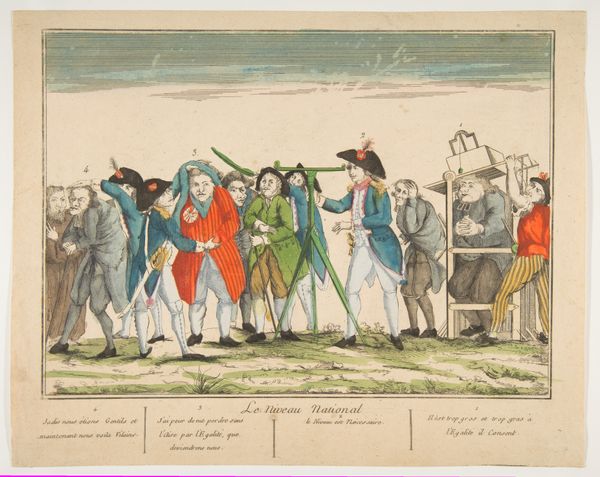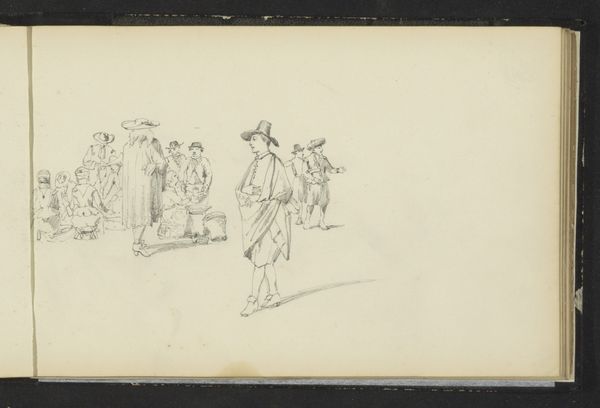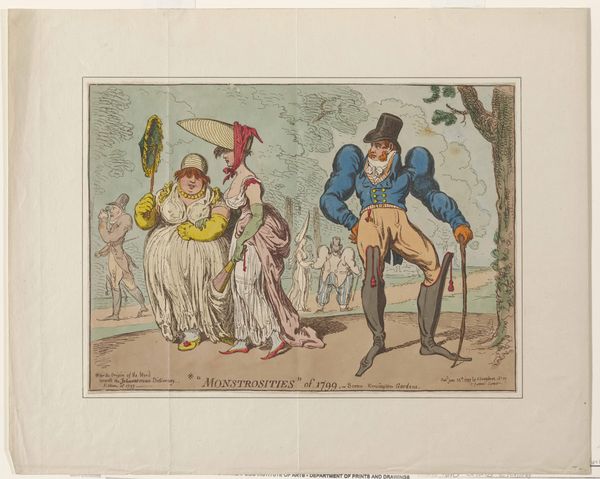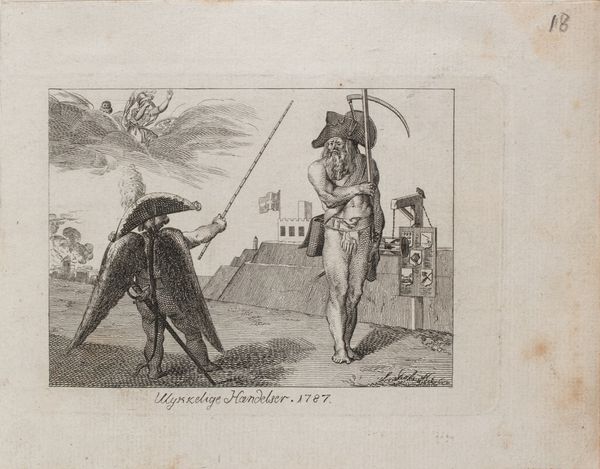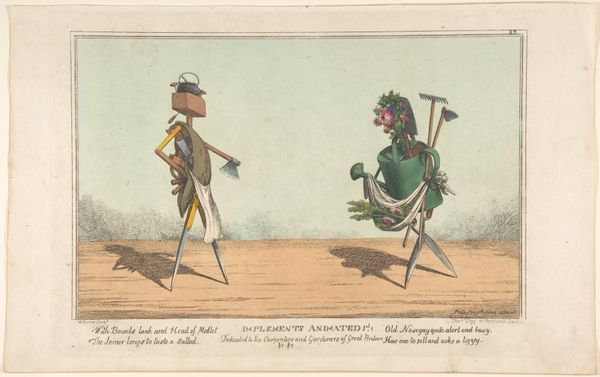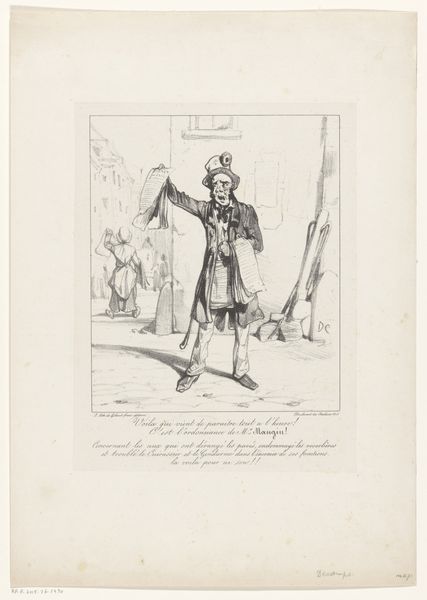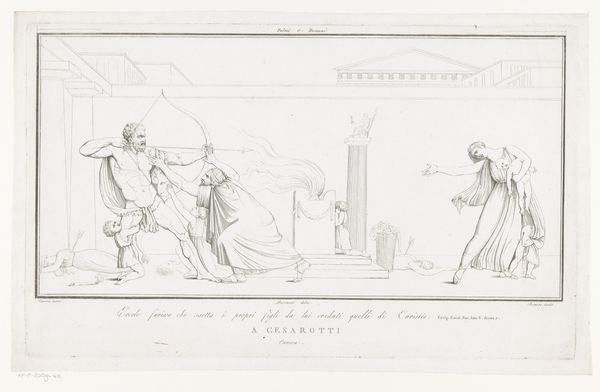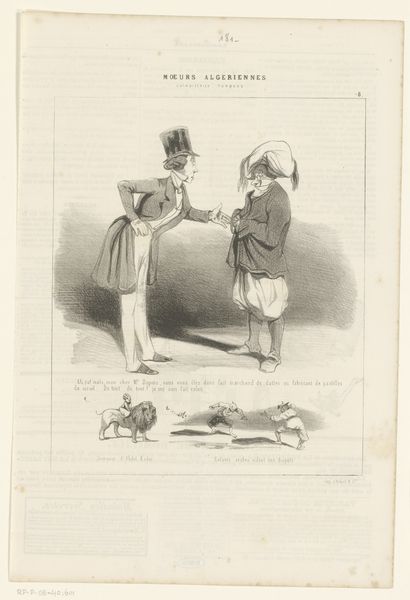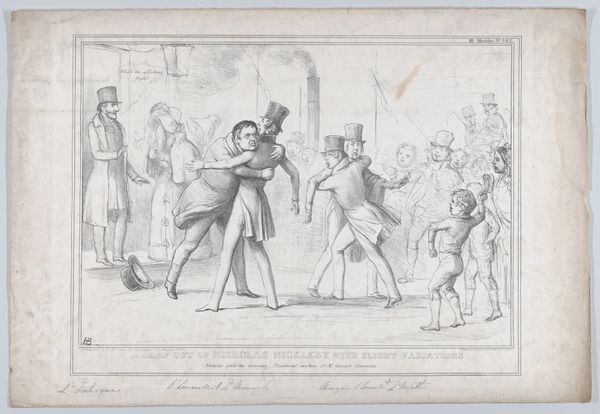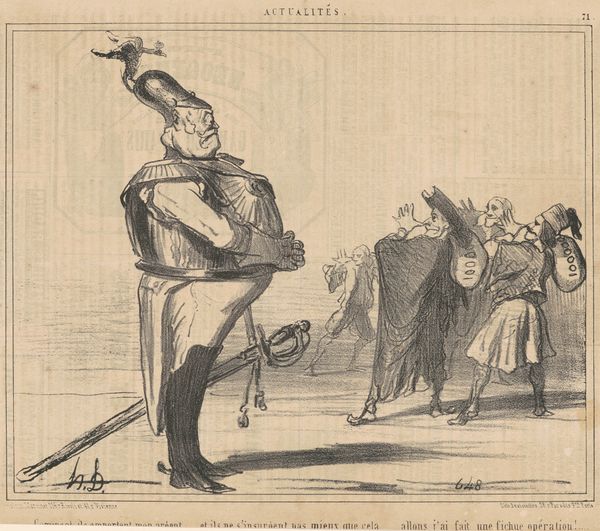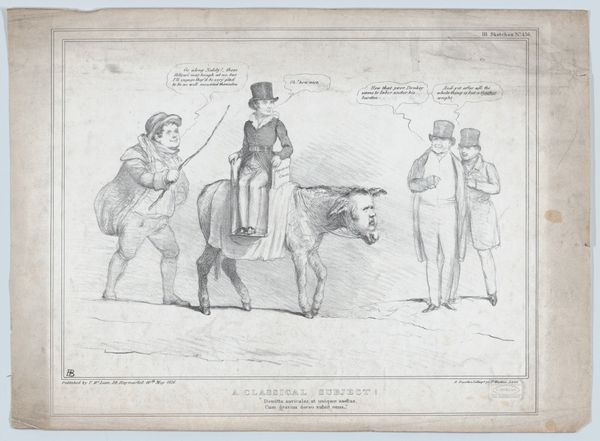
Karikatur auf die Parteien der Roten, die Klein- und die Groß-Deutschen, repräsentiert durch die Abgeordneten zum Frankfurter Parlament 1848 Dr. Jucho, von Rabenau, Giskra und Schmerling c. 1848
0:00
0:00
drawing, paper, chalk
#
portrait
#
drawing
#
16_19th-century
#
caricature
#
paper
#
german
#
chalk
#
history-painting
#
academic-art
Copyright: Public Domain
Curator: This intriguing chalk drawing on paper is entitled "Karikatur auf die Parteien der Roten, die Klein- und die Groß-Deutschen, repräsentiert durch die Abgeordneten zum Frankfurter Parlament 1848 Dr. Jucho, von Rabenau, Giskra und Schmerling," created circa 1848 by Ernst Schalck. It's currently housed in the Städel Museum. My immediate impression is one of theatricality, perhaps a behind-the-scenes glimpse before a performance. The exaggerated poses suggest satire, but the material handling feels quite refined. Editor: There is an array of interesting headwear here! Let's examine it for symbolic resonance. Each hat style immediately declares allegiances. The plumed hats on the left conjure images of aristocracy, possibly alluding to a traditional power structure, while the high hats denote bourgeois status... the message feels like these outfits are performative representations of ideals. Curator: Precisely. Schalck cleverly exploits the potential of fashion to indicate social and political positions, it functions as material culture. These are not simply men; they are embodiments of ideological currents. The choice of chalk on paper also interests me. It suggests a certain ephemerality, perhaps a commentary on the fleeting nature of political alliances and social identities. Editor: Agreed. Chalk also implies sketching or note-taking, and hints that this work's true home and utility was perhaps within print production. Note how some of these figures appear quite polished while other areas retain only ghostlike renderings. It really has a spontaneous, documentary-like quality—are we seeing initial notes refined, ready for wider dissemination? Curator: Yes, a method of mass-reproduction might indeed have been Schalck’s intention here! I suspect this was intended as source material that, due to material constraints, never reached mass-market reproduction. It reminds us of how dependent imagery of the era was on processes of distribution, and this unique original is what remains to remind us. Editor: What intrigues me further is the overall staging and framing of these figures. With a structure that presents the impression of a processional or presentation, could Schalck be playing on well-established archetypes to draw attention to political figures who adopt self-congratulatory postures and airs of superiority? Curator: Perhaps he understood the innate theatricality of the Frankfurt Parliament and used visual language to unmask and criticize power relations within that moment in history. His clever approach makes us question the role that individuals and representations play in influencing how societal beliefs form. Editor: Studying its composition and character provides so much to think about on multiple levels. The historical era and implied meanings of these assembled caricatures resonate powerfully, but they make a contemporary comment too. Curator: Agreed. Examining this drawing forces one to reconsider historical turning points, revealing that these events are as much shaped by human ego and perception as they are by economic or societal developments.
Comments
No comments
Be the first to comment and join the conversation on the ultimate creative platform.
